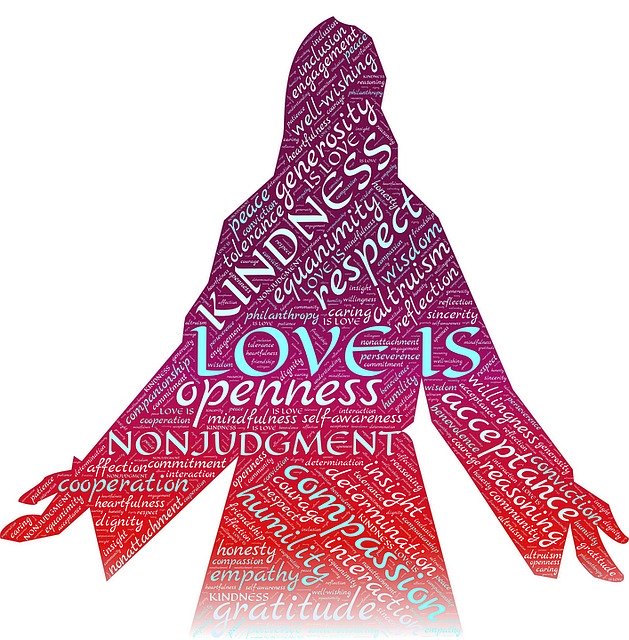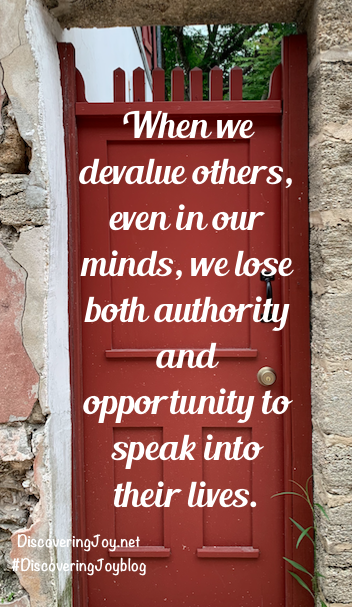Culture… It can be defined as the customs, beliefs, values, and celebrations of a particular group of people. While we typically associate culture with a country’s people group, there is a myriad of other cultures.
Family cultures vary in birthday celebrations, entertainment choices, discipline styles, faith commitments, and vacation destinations. Churches, restaurants, towns, and workplaces also have their own versions of culture.
Whether you are a stay-at-home parent, a teacher, a waiter, a welder, a consumer, or a football fan, you are contributing to some culture, most likely several cultures! So, what are you adding to the cultures in your realm of influence as you go through your day?
I ask this because cultural contributions are a topic close to my heart. Each part of our day gives us an opportunity to choose between positive and negative contributions. As we drive to work each morning, we can positively or negatively impact the traffic culture. (Let that sink in… is your horn a tool or a tactic? Do you wave someone on or wag a finger at them?)
In the busy coffee shop, we can stir up discontent or exemplify patience. Yes, even that seemingly small choice will make a difference in the atmosphere while we wait. Cultural contributions are evident in our facial expressions, our words, our actions, and our attitudes. (When stressful moments come, what we carry in our heart is what comes pouring out… but that’s a topic for another blog!)
While your daily contributions do impact the culture around you, facilitating a culture takes our responsibility further. If you’ve read this far, don’t stop now! 😊 Think of the top 2 or 3 places you spend most of your time. These are the places where you have a role in culture facilitation.
I’ve worked jobs that felt like I was working with family. There was laughter, encouragement, and a boatload of inside jokes. I’ve also worked at jobs that felt like eggshells were scattered all over the floor and stepping on even one would lead to disaster. You had to be careful of what you said, who you said it to, and what tone you used. Similar contrasts can be seen in every culture that we engage in. A negative culture will multiply stress, decrease fulfillment, and increase a sense of aloneness.
My current school has been my work home for over 14 years. We’ve had our ups and downs and the student population we serve comes with more challenges than many. And yet, I have no desire to go to a more affluent school, higher paying district, or one with more accolades. Why? Because I am part of a staff that has worked to develop and maintain a positive culture even through administration changes. Is everyone 100% all in? No… rarely does that happen. Is everyone trustworthy or positive or culture-focused? Nope! BUT, the majority–from admin to cafeteria staff to custodians to teachers–are committed to giving their best day to day. And… don’t miss this… there is an attitude of togetherness, support, and “I’ve got your back” that sets our school culture up for continued success even when the changes, the data, the challenges, can feel smothering and disheartening. This positive culture was not built by one, but by many. It didn’t happen overnight, it happened when individuals chose to show up, give their best, and seek the good of the whole consistently.
Is this type of work or school culture feel foreign or unattainable to you? Do you want to help facilitate a positive culture but you’re thinking: “You have NO idea what my workplace, home, or school is like!” Let me encourage you… YOU CAN MAKE A DIFFERENCE! Maybe the macro level is out of your realm of influence, but the micro level is not! You can facilitate a positive culture in your home, your office, your workshop, your classroom, your worship center, or on your team!
The starting point is this: Treat others the way you’d like to be treated (not the way you’ve been treated)!1
How did Cindy Lou Who get through to the Grinch? By showing kindness that he did not expect or deserve!2
In addition to kindness in the face of crudeness, consider these commitments needed to facilitate a positive culture:
- Be humble-We all make mistakes, don’t be afraid to own up to yours!
- Be generous-It will come back to you!
- Be honest-Lies and half-truths will eventually bite you in the behind and ruin your reputation!
- Be respectful-The CEO and the janitor deserve the same level of respect, manners are important!
- Be nonjudgmental-Rarely do we know what others are walking through!
- Be cautious with your words-Talking about others negatively reflects more on you than on them!
- Be encouraging-Celebrate the successes of others, big or small!
- Be compassionate-Life can be challenging for all of us even on a good day!
- Be teachable-No one knows it all or likes a know it all!
- Be integrous-Doing the right thing will help you sleep well at night and make you the type of person that others trust and appreciate!
Be the change! Choose 1 thing you can do today or tomorrow that will bring a positive vibe to your realm of influence. You won’t regret stepping up your game when it comes to facilitating a positive culture at home, school, work, or on the field. When you lay the groundwork, others will join you. You truly can make a difference!
My students say a chant with me every day. It starts with: “I am one of a kind! I bring something to this world that no one else can.” We declare some other things over ourselves and then end the chant like this: “I am a world changer!” So are you!
You are amazing!

1Jesus (Luke 6:31)
2The Grinch Who Stole Christmas by Dr. Seuss







